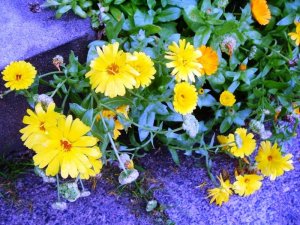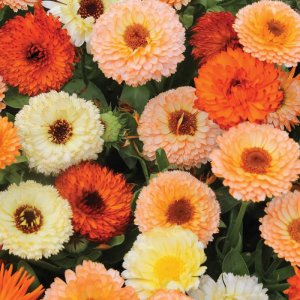Camper6
Well-known Member
- Location
- Northwestern Ontario Canada
There are some flowers that are annuals that you can plant from seed. Then let the seeds mature in the fall and just leave them fall and go through the winter. In the spring they will come up all on their own in huge numbers. These flowers love poor soil and lots of sun. They are called Calendula or Scotch Marigolds. They will also reproduce themselves with other colors. Notice there are orange ones and yellow with different centers. Also bug resistant. 



